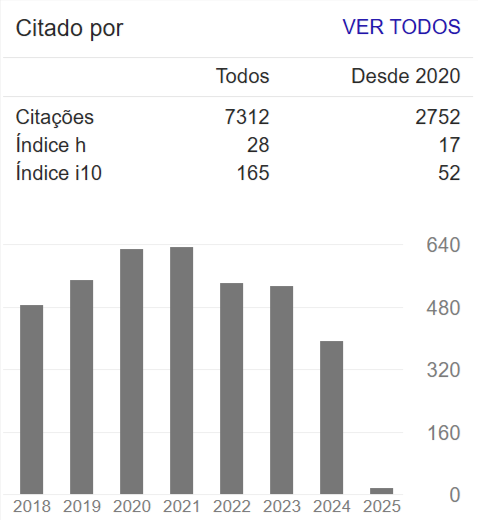Appearance of seasonality in the physical - chemical parameters of the water from the wells, Raposa, Maranhão, Brazil
Abstract
Drinking water is one of the main means for preserving human health, however, water that does not have adequate treatment can serve as a potential vehicle for disease transmission, since it can carry innumerable diseases from quality control failures of the springs and reservoirs that supply water to the population, either by ingestion or by contact of the skin and mucous membranes with contaminated water. The increase in the demand for drinking water and the risks of contamination of the underground wells because they are close to inadequate waste dumps and deposits are some of the problems faced by the Autonomous Water and Sewage Service (SAAE) of the municipality of Raposa. Three Principal Components (CP) were generated explaining more than 75% of the total variance between the studied periods. In the PC1, PC2 and PC3 were evaluated the variables pH, turbidity, conductivity, total dissolved solids, nitrate and nitrite content related to the variation in seasonal periods.

















